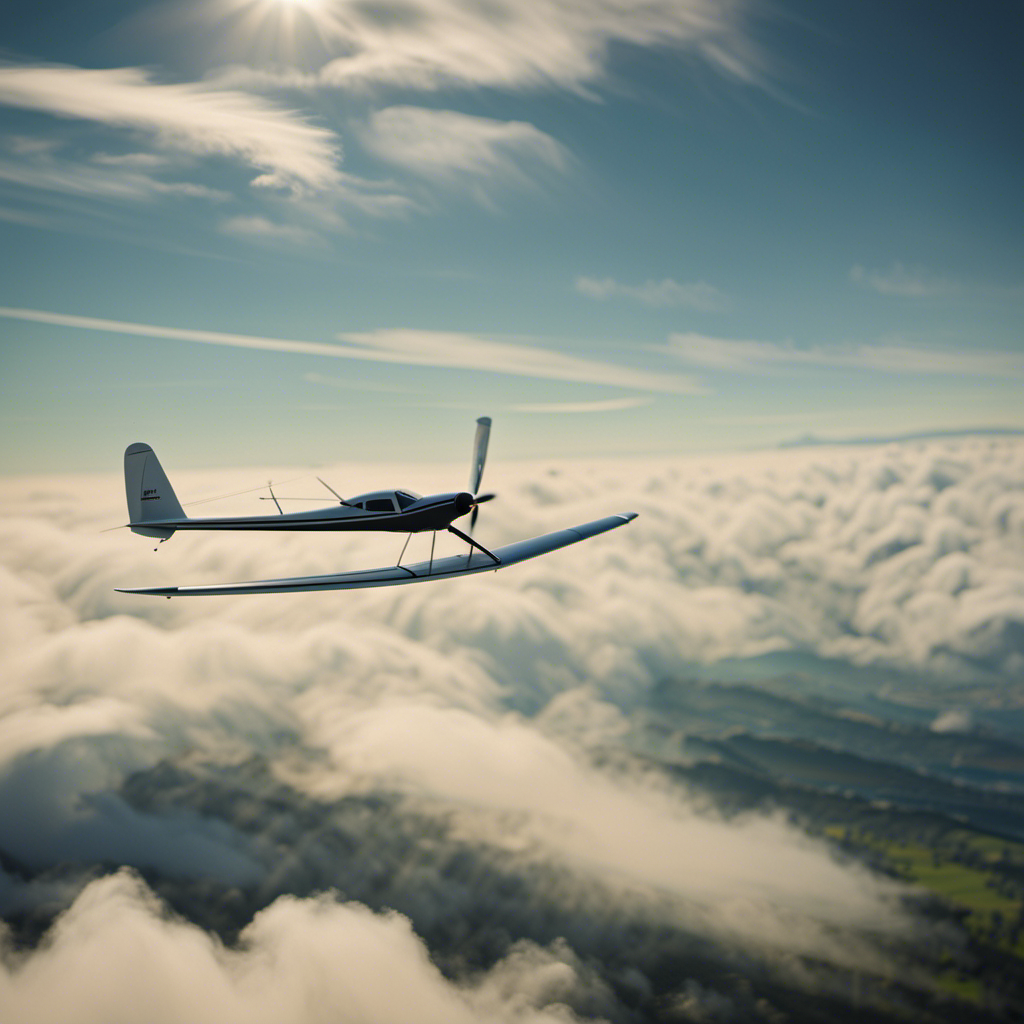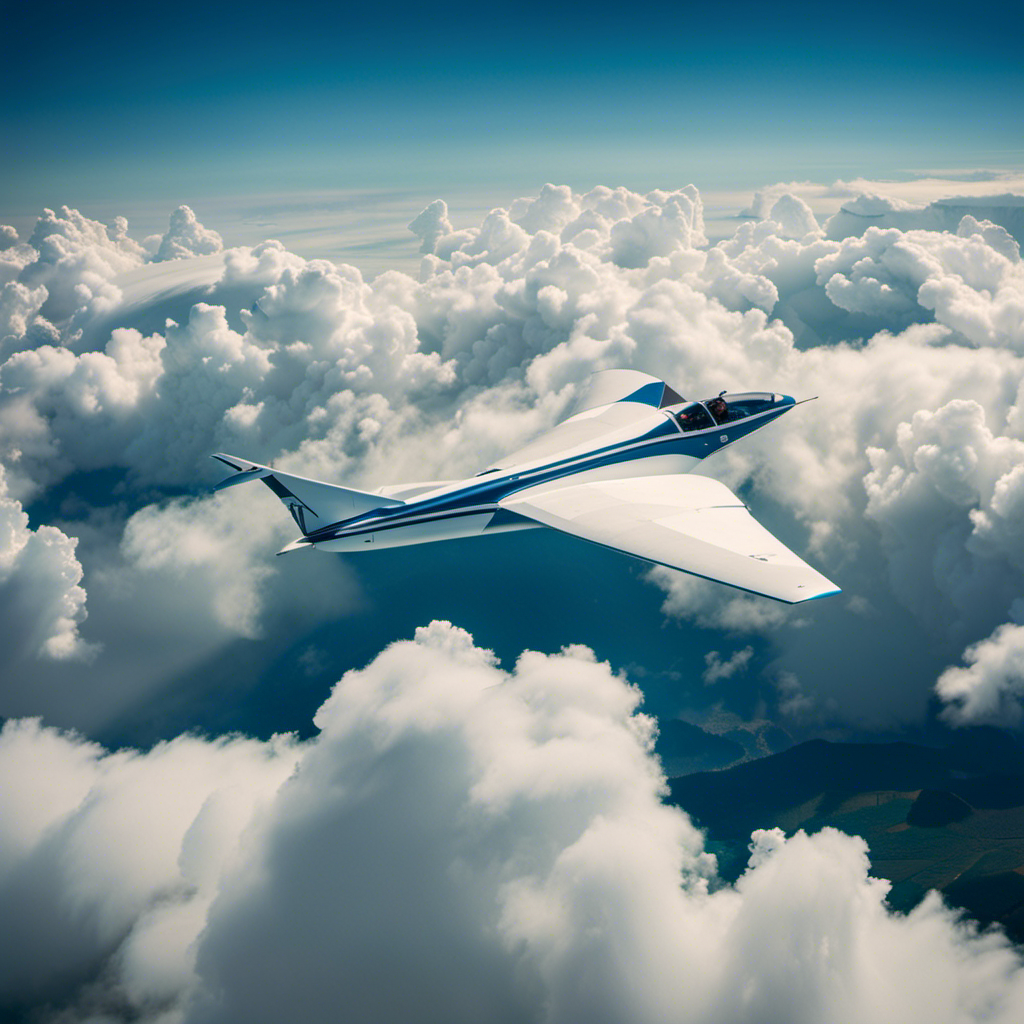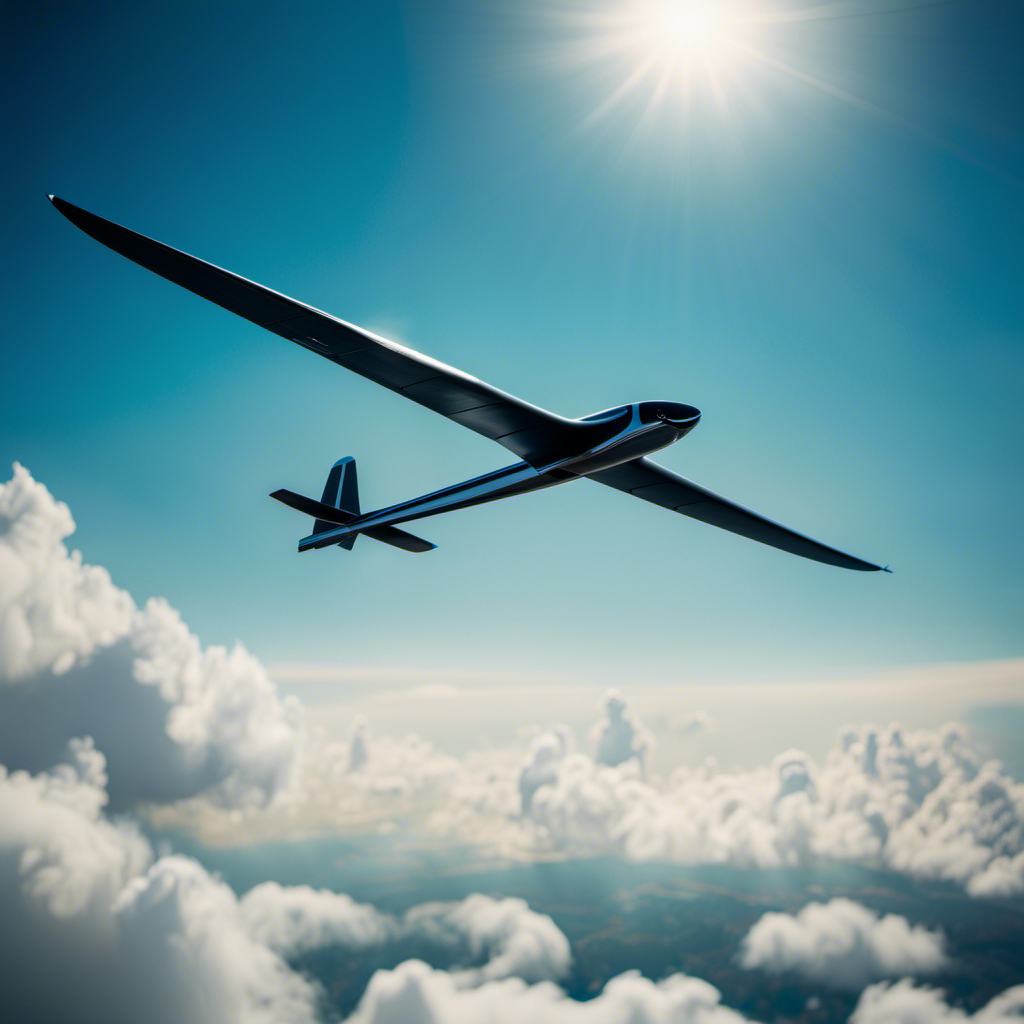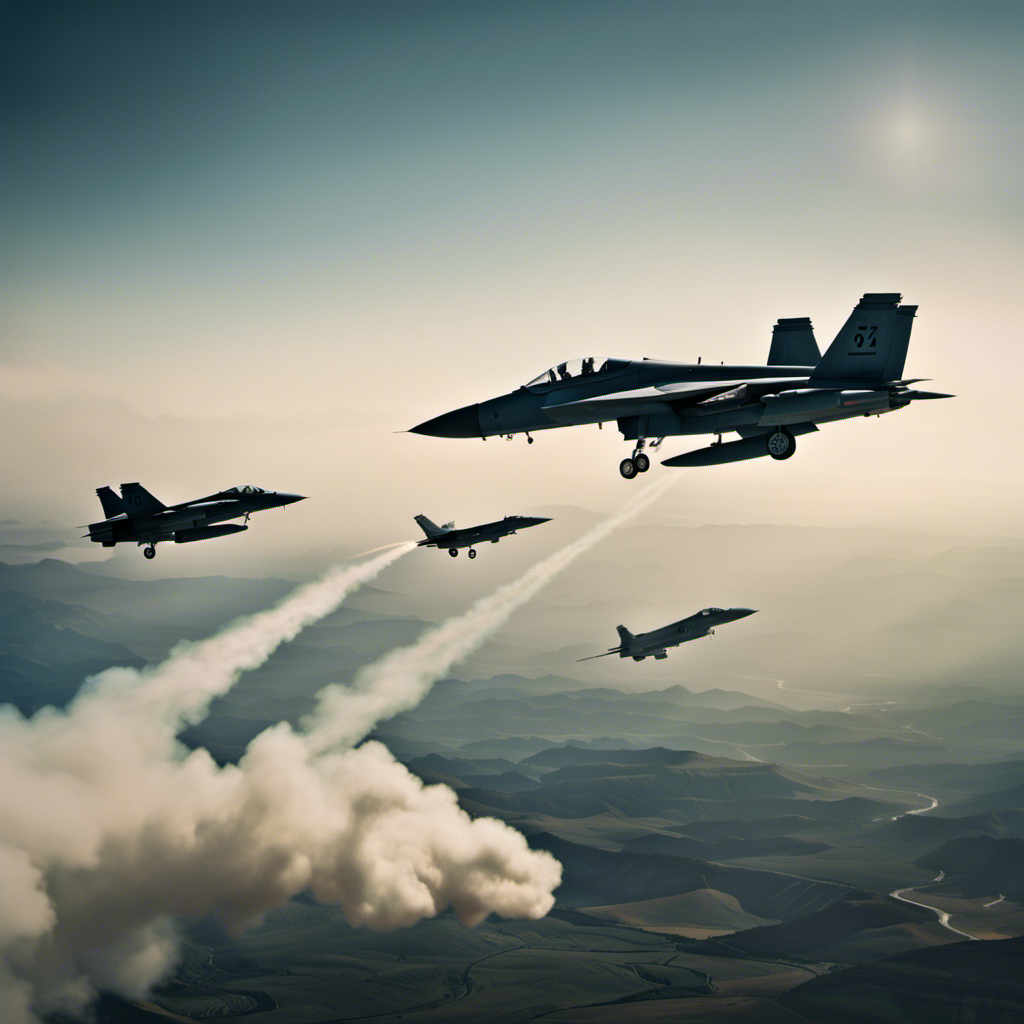Are you ready to experience the excitement of gliders? Get ready for an amazing journey as we explore the basic and advanced techniques of gliding through the sky.
From the history of sailplanes to understanding their design and structure, we’ll cover it all. Learn the principles of flight, essential equipment, and safety measures, as well as the thrill of cross-country soaring.
Soar high and join the community of sailplane pilots as we embark on this exciting journey together.
Key Takeaways
- Sailplanes are designed for different purposes, including basic recreational flying, high-performance flying, competitive soaring, and motor gliding.
- Cross-country soaring allows pilots to cover long distances, navigate challenging terrain, and experience excitement, awe, peace, and a sense of accomplishment.
- Joining the sailplane community through clubs, competitions, and events provides opportunities to connect with fellow enthusiasts, learn from experienced pilots, showcase skills, and stay updated on the latest developments in the field.
- In emergency situations, pilots need to identify the cause, follow established procedures, deploy emergency parachutes if necessary, make distress calls, and initiate controlled landings.
History of Sailplanes
If you’re interested in the history of sailplanes, you’ll be fascinated to learn about their development over the years.
Sailplanes, also known as gliders, have a rich history that dates back to the late 19th century. The first manned glider flights took place in the 1890s, with pioneers like Otto Lilienthal and the Wright brothers paving the way for future advancements.
In the early 20th century, gliding clubs began to form, allowing enthusiasts to come together and share their passion for soaring through the air. As technology progressed, so did the design of sailplanes. Modern sailplanes now feature sleek and aerodynamic shapes, advanced materials, and sophisticated instruments to enhance safety and performance.
Understanding the design and structure of sailplanes is crucial for pilots and enthusiasts alike, as it allows for a deeper appreciation of these remarkable flying machines.
Understanding the Design and Structure of Sailplanes
To understand how sailplanes work, you’ll need to familiarize yourself with their design and structure. Sailplanes, also known as gliders, are aircraft that rely solely on the forces of lift and gravity to stay airborne. Unlike powered airplanes, sailplanes do not have engines and are designed to glide through the air using the natural elements. The design and structure of sailplanes are optimized for maximum efficiency and stability. Let’s take a closer look at the key components of a sailplane:
| Component | Function | Example |
|---|---|---|
| Wings | Generate lift | High aspect ratio |
| Fuselage | Houses cockpit | Streamlined shape |
| Tail | Controls pitch | Elevator, rudder |
| Landing gear | Supports landing | Retractable |
Understanding the design and structure of sailplanes is essential to grasp the principles of flight for these remarkable aircraft. The next section will delve into the fundamentals of how sailplanes stay aloft and maneuver through the sky.
Principles of Flight for Sailplanes
The principles of flight for sailplanes can be understood by examining how they generate lift and control their movement in the sky. Sailplanes rely on the same fundamental principles of flight as other aircraft, but their unique design allows them to soar and stay aloft for longer periods.
Here are a few things that may evoke excitement and curiosity:
- Imagine the exhilaration of catching a thermal, a rising column of warm air, to gain altitude and extend your flight.
- Picture the freedom of flying silently through the sky, feeling the wind in your face and the sense of weightlessness.
- Visualize the breathtaking views from high above, as you glide effortlessly over picturesque landscapes.
Understanding the principles of flight is just the beginning of your journey into the world of sailplanes. Now, let’s explore the essential equipment and instruments that sailplane pilots rely on to navigate and stay safe in their remarkable airborne adventures.
Essential Equipment and Instruments for Sailplane Pilots
Get ready to navigate and stay safe during your remarkable airborne adventures with the essential equipment and instruments that sailplane pilots rely on.
As you strap yourself into the cockpit, your eyes will be drawn to the altimeter, which measures your altitude above sea level, and the airspeed indicator, which tells you how fast you’re flying.
The variometer is another crucial tool, indicating whether you’re climbing or descending.
You’ll also need a compass to help you maintain your heading, and a GPS unit for precise navigation.
Don’t forget about the radio for communication with air traffic control and other pilots.
And of course, you’ll want a parachute in case of emergency.
With these tools at your disposal, you can confidently embark on your journey into the skies.
Now, let’s delve into learning to fly a sailplane: basic techniques and skills.
Learning to Fly a Sailplane: Basic Techniques and Skills
As you master the art of flying a sailplane, you’ll quickly become familiar with the importance of weight management and balance. These factors play a crucial role in ensuring optimal performance and safety during your flights.
To help you understand the significance of weight management and balance, consider the following:
-
Proper weight distribution: Distributing the weight evenly throughout the sailplane is essential to maintain stability and control. A well-balanced sailplane will respond accurately to your inputs and perform better in various flight conditions.
-
Center of gravity: The center of gravity (CG) is the point at which the sailplane is balanced. It is important to keep the CG within the specified limits to prevent excessive nose-heavy or tail-heavy conditions, which can affect the sailplane’s handling characteristics.
-
Ballast management: Adding ballast, such as water or lead weights, can increase the sailplane’s weight, enabling it to handle stronger winds and maintain stability.
Understanding and managing weight and balance will lay a solid foundation for your sailplane flying experience. Now, let’s explore some advanced flying techniques for experienced sailplane pilots, taking your skills to new heights.
Advanced Flying Techniques for Experienced Sailplane Pilots
Now that you’ve mastered the basics of flying a sailplane, it’s time to delve into advanced techniques that will take your skills to new heights.
One of the key techniques is thermalling, which involves circling within a rising column of air called a thermal. By centering yourself in the thermal and constantly adjusting your bank angle and airspeed, you can stay in the lift and gain altitude.
Another advanced technique is ridge soaring, where you fly along the ridge of a mountain or hill, utilizing the upward wind created by the terrain. This technique requires precise control and an understanding of how the wind interacts with the landscape.
Safety Measures and Emergency Procedures for Sailplane Flying
When encountering an emergency situation while flying a sailplane, it’s crucial to quickly assess the situation and take the necessary steps to ensure your safety. Here are three important safety measures and emergency procedures to keep in mind:
-
Stay calm and maintain control of the sailplane: Panic can cloud your judgment and hinder your ability to make rational decisions. Take a deep breath and focus on flying the sailplane to the best of your abilities.
-
Identify the problem: Determine the nature and severity of the emergency. Is it a mechanical failure, adverse weather conditions, or something else? Understanding the root cause will help you devise an appropriate course of action.
-
Execute the emergency procedure: Depending on the situation, follow the established emergency procedures for sailplane flying. These may include actions such as deploying the emergency parachute, initiating a controlled landing, or making distress calls to air traffic control.
By being prepared and knowing how to respond in emergency situations, you can enhance your safety while flying a sailplane.
Now, let’s explore different types of sailplanes and their capabilities.
Exploring Different Types of Sailplanes and their Capabilities
Let’s take a look at the various types of sailplanes and what they’re capable of.
First, we have the Standard Class sailplanes, which are designed for basic recreational flying. They have a wingspan of about 15 meters and offer a comfortable and stable flight experience.
Next up, we have the Open Class sailplanes, which are built for high-performance flying. With longer wingspans and sleeker designs, they can reach incredible speeds and cover long distances.
Then, there are the Racing Class sailplanes, specifically designed for competitive soaring. These machines are built for speed and agility, allowing pilots to navigate through challenging race courses.
Finally, we have the Motor Gliders, which combine the benefits of a sailplane with an engine for added flexibility.
Now that you know about the different types of sailplanes, let’s dive into the exciting world of cross-country soaring.
Experiencing the Thrill of Cross-Country Soaring
Cross-country soaring offers a thrilling experience, allowing you to cover long distances and navigate through challenging terrain. Picture yourself soaring through the sky, feeling the rush of adrenaline as you fly over magnificent landscapes. The freedom and exhilaration of cross-country flying are unparalleled. Not only do you get to appreciate the beauty of nature from a unique perspective, but you also get to test your piloting skills and push your limits. To give you a glimpse of the emotions that cross-country soaring can evoke, take a look at the table below:
| Emotion | Description |
|---|---|
| Excitement | Heart racing, anticipation building as you take off into the unknown. |
| Awe | Overwhelmed by the grandeur of the scenery below and the vastness of the sky above. |
| Peace | A sense of tranquility as you glide effortlessly through the air, leaving all worries behind. |
| Accomplishment | A feeling of pride and satisfaction as you successfully complete a challenging cross-country flight. |
Now that you have experienced the thrill of cross-country soaring, let’s explore how you can join the sailplane community through clubs, competitions, and events.
Joining the Sailplane Community: Clubs, Competitions, and Events
Joining the sailplane community can be an exciting opportunity to connect with fellow enthusiasts and participate in thrilling competitions and events. When you become part of a sailplane club, you gain access to a supportive network of experienced pilots who are eager to share their knowledge and passion for the sport.
These clubs often organize exciting competitions, such as distance racing or aerobatics, where you can showcase your skills and compete against other pilots. Additionally, there are various events held throughout the year, including airshows and fly-ins, where you can admire different types of sailplanes and meet like-minded individuals.
Conclusion
Congratulations! You’ve reached the end of our journey through the captivating world of sailplanes. From uncovering the rich history of these graceful aircraft to delving into the principles of flight, you’ve gained a deep understanding of their mechanics and capabilities.
By exploring the essential equipment and instruments, learning basic techniques, and understanding safety measures, you’re well on your way to becoming a skilled sailplane pilot.
So strap in, spread your wings, and get ready to soar to new heights in this exhilarating sport that’ll leave you breathless with excitement!
With a heart that soars as high as the skies, Aria, affectionately known as “Skylark,” is the driving force behind Soaring Skyways. Her journey into the gliding world began as a young dreamer gazing up at the soaring birds, yearning to experience the weightlessness and freedom they embodied. With years of experience both in the cockpit and behind the scenes, Aria’s commitment to the gliding community is unwavering.










